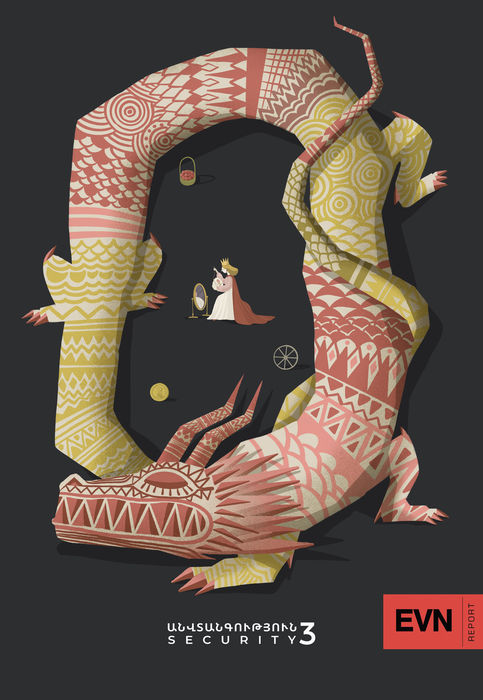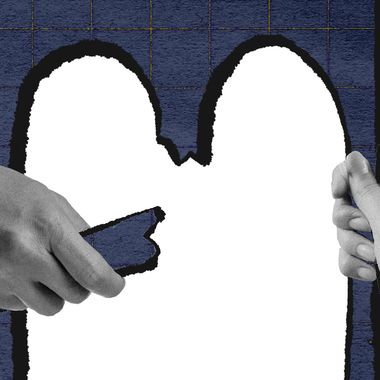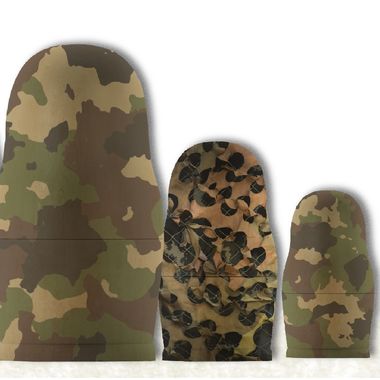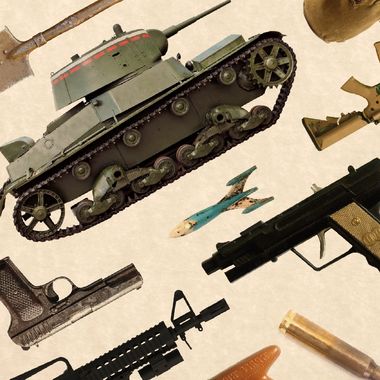Wed May 05 2021 · 8 min read
Military Expenditures and the Economy: Behind the War of Weapons

By Ani Avetisyan

The Stockholm International Peace Research Institute (SIPRI) published its annual report in late April, according to which Azerbaijan increased its military spending by 17% in 2020, among the largest annual increases in Eastern Europe and Eurasia. “The rise in spending was largely driven by the conflict with Armenia over the Nagorno-Karabakh region,” the report reads. More surprising, however, was that, despite the fighting in the Tavush region in July 2020 and the 2020 Artsakh War in the fall, Armenia’s military spending in 2020 was actually down 2.6% compared to 2019 (in inflation-adjusted USD).
Both countries have similar levels of per capita GDP. World Bank figures for 2019 place Armenia and Azerbaijan at $4,623 and $4,791, respectively. However, as Azerbaijan has a larger population, its total annual GDP is considerably higher, at $48 billion, compared to Armenia’s $13.7 billion. These figures need to be taken into account when comparing the overall totals: In 2020, Armenia spent $634 million on military expenditures vs. Azerbaijan’s $2.2 billion.
As a share of government spending, Armenia has invested a greater proportion of its public budget into the military, at least since 2005 which is as far back as SIPRI’s data on this measure goes. Despite the heavy mismatch in absolute terms,16.7% of Armenia’s 2020 budget went to military spending, compared to Azerbaijan’s 12.7%.
As a share of annual GDP, Azerbaijan spent more than Armenia in 2006 (when the Baku-Tbilisi-Ceyhan oil pipeline became operational), 2011-2015, and 2020 (when Azerbaijan stood at 5.4% in comparison to Armenia’s 4.9%); in all other years, including since the 2016 Four Day April War, Armenia had posted higher figures on this measure. For comparison, NATO member countries are expected to spend at least 2% of annual GDP on their militaries, a figure that most Western European countries fell short of and were lambasted by Donald Trump for. The United States spent 3.7% of its GDP on the military in 2020.
Azerbaijan has deep hydrocarbon resources to draw on, which provide direct royalties to the state budget. In contrast, Armenia needs to place these costs on its tax base. This dependence on oil prices is a double-edged sword, however. For example, from 2011 to 2015, even in per capita terms (remember that Azerbaijan’s population is about three times that of Armenia), Azerbaijan spent double what Armenia did on its military. However, after the December 2014 oil price collapse, these expenditures had to be scaled back to the point where Armenia’s per capita military expenditure began to exceed Azerbaijan’s. In 2020, they were roughly even, with Armenia spending $214 per person, compared to Azerbaijan’s $221.
The Most Efficient Army in the South Caucasus
The fact that Azerbaijan’s military expenditures exceeded Armenia’s is not news. However, this reality had previously been dismissed by the Armenian side. It was presumed that Armenia spent its military budget more “efficiently” and that Azerbaijan’s spending was rife with corruption. The Armenian fighters of Artsakh had established a reputation as fierce opponents, whose knowledge of the terrain and will to remain on their native land offset overall dollar figures.
In 2000, the Center for International Studies of the Paris Institute of Political Studies (Sciences Po) reported that, at that time, Armenia’s Army had the strongest combat capability in the South Caucasus. CSTO Secretary Nikolay Bordyuzha came to a similar conclusion a few years later. In 2007, he stated, "The Armenian Army is the most efficient one in the post-Soviet space.” The image of the “strongest army in the region” was pushed by every Armenian leader and simply taken for granted by the Armenian population. After the clashes in the Tavush region in July 2020, Armenia’s Prime Minister Nikol Pashinyan repeated the line. The Pashinyan government had begun a modernization program for the military to acquire the latest equipment after it came to power in 2018.
In hindsight, the mismatch in resources is more apparent. The defeat has brought new questions about the Armenian Army’s combat readiness and just how efficient past expenditures actually were. These were taboo topics, even while the 2020 Artsakh War was raging. Doubting the army’s capability was viewed as unpatriotic. On the other hand, the military procurement process in Armenia is not transparent, which allows for corruption risks. One example was revealed after the war and was connected with well-known arms dealer Davit Galstyan, who became an adviser to the Defense Minister in the post-revolution government and was known for his previous suspicious arms deals.
The Most Militarized State in the South Caucasus
The conflict over Nagorno-Karabakh, proportionally high military expenditures and the structure of the army made Armenia one of the most militarized countries in the world. According to the Bonn International Center for Conversion’s Global Militarisation Index, Armenia was the second-most militarized country in the world in 2020, after Israel. The index aims to “depict the relative weight and importance of the military apparatus of one state in relation to its society as a whole.”
Azerbaijan was 16th on the same list. “Even though the parties agreed to a Russia-brokered ceasefire on 10 November 2020, it is likely that Armenia (position 2) and Azerbaijan (position 16)... will continue to invest significantly in their military, given the conflict situation,” the report reads.
According to the International Institute for Strategic Studies’ Military Balance 2020 report, both Armenia and Azerbaijan were among the top ten countries in terms of active military personnel in the region (Eurasia and Russia). Armenia’s personnel stood at 44,800, while Azerbaijan’s was 66,950.
Military Spending and the Economy
Between 1995 and 2020, Azerbaijan spent around five times more than Armenia’s military expenditure. During this 25 year period, Armenia allocated around $7.4 billion to the Ministry of Defense, which is the only official indicator of Armenia’s military spending. In comparison, Azerbaijan’s military spending includes the defense and security sectors, which refer not only to the Ministry of Defense but also the State Border Guard Service, State Security Service and the External Intelligence Service. During this period, Azerbaijan spent around $32.5 billion.
In the late 1990s, both countries entered a period of economic stabilization and growth. Azerbaijan’s oil supplies made this growth more tangible. In the 2000s, Azerbaijan experienced a boom in oil production, which triggered increased government expenditure in all sectors, including military and security.
Azerbaijan's high economic growth in the early 2010s was attributable to rising energy exports and some non-export sectors. The global decline in oil prices in 2014, however, affected the country’s economy, causing a 3.1% contraction in GDP in 2016 and a 0.8% decline in 2017. Before the oil-price crisis, Azerbaijan’s per capita GDP was around double Armenia’s. However, since 2016, the difference between them has become negligible.
Between 2011 and 2015, the year before the 2016 Four Day April War, Azerbaijan’s military costs peaked at $3 billion per year. But in 2016, Azerbaijan’s GDP was down to $37.8 billion, about half of the $75 billion figure posted in 2014. In 2020, Azerbaijan’s GDP stood at around $46 billion, contracting by 4.3% compared to pre-COVID 2019. The main driving force behind Azerbaijan’s economy is still oil exports through several pipelines. Later in 2020, those pipeline networks were extended to the borders of the European Union.
Armenia’s economy was greatly affected by the 2008 financial crisis. Between 2008 and 2009, Armenia’s GDP sank from $11.7 billion to $8.6 billion, a whopping 26% reduction. It would not fully recover to the 2008 level until 2018. Military expenditures held relatively steady, however, increasing as a proportion of GDP, from 3.4% to 4.2% between 2008 and 2009. Following the slow pace of economic growth, the military spending to GDP ratio was generally maintained in the following years.
During the 2016 Four Day April War, Azerbaijan first used its modern UAVs, foreshadowing the nature of the next large-scale war. Azerbaijan’s arsenal was supplemented by Israeli and Turkish suicide and reconnaissance UAVs. Meanwhile, Armenia was trying to invest in the production of Armenian-made suicide drones.
During this period of time, both countries kept military expenditures close to 4 to 5 percent of GDP. 2020 was an outlier for Azerbaijan, when its military expenditure to GDP ratio shot up from 3.9% to 5.4%.
Armenia did increase military spending in its post-revolution 2019 ($652 million) and 2020 ($635 million) budgets, compared to 2017 ($464 million) and 2018 ($523 million). The 2.6% drop in 2020 compared to 2019 is difficult to explain but may be related to the COVID-19 pandemic. According to the official budget, Armenia had about $625 million allocated for military expenditures in 2020, which was increased by another $80 million in October 2020, through a Parliament vote.
Strategic Partners and Arms Deals
Both Armenia and Azerbaijan have a reputation of being military partners with Russia. In Armenia’s case, this cooperation is part of a dependence on Russia both economically and in the military sector. According to the SIPRI database, during the last five years, around 95% of Armenia’s arms imports came from Russia. Some of Armenia’s arms suppliers were second-hand suppliers of Russian-made weapons.
Russia was the leading arms supplier to Azerbaijan for several years before Israel and Turkey reduced its share. According to SIPRI, between 2015-2019, Russia provided 31% of Azerbaijan’s military exports, compared to 80% between 2009-2013.
Russia described this cooperation as “only business” in responding to accusations of enabling Azerbaijan’s offensive tactics.
Amid these factors, the share of Russian-made military equipment in the Azerbaijani Army is decreasing. In contrast, Armenia became much more dependent on its “strategic partner,” considering Russia’s expanding presence in the country. In addition, Armenia plans to implement reforms in the army in the framework of military cooperation with Russia.
Future Directions
Given the current state of the Nagorno-Karabakh conflict and the need to retool their armies in the bloody aftermath of the war, both countries are expected to maintain high levels of military expenditure. Both countries lost or have damaged military equipment worth millions or billions of dollars; the post-war years will be spent on rebuilding and restoring the army and the security structure. According to its state budget, however, Armenia is allocating roughly $600 million to the Ministry of Defense, while Azerbaijan allocated around $2.6 billion for defense and national security expenses in 2021, roughly 20% more than in 2020.
also read
The Hunt for Spies
By Astghik Karapetyan
There have been numerous public accusations related to espionage and high treason since the start of the 2020 Artsakh War. Despite all the noise, only one case of high treason and one case of espionage were filed during and after the war.
Russia’s Increasing Military Presence in Armenia
By Hovhannes Nazaretyan
When Armenia declared independence in 1991, there was still a large contingent of Soviet troops in the country. Russian military presence, however, stretches back to the early 19th century and now, after the 2020 Artsakh War, is expanding.
Bayraktars Over Artsakh
By Hovhannes Nazaretyan
Armenia’s air defense systems were largely ineffective against the onslaught of combat and reconnaissance UAVs used by the Azerbaijani military. The single most important UAV used in the 2020 Artsakh War was the Turkish-made Bayraktar TB2.
Arms Supplies to Armenia and Azerbaijan
By Hovhannes Nazaretyan
For nearly three decades, Armenia and Azerbaijan have been buying large quantities of weapons from a number of countries. Hovhannes Nazaretyan presents a comprehensive list of weapons acquired by both countries since independence.
Security
Issue N 3

Armenia’s New Security Architecture: Russia as Geopolitical Bodyguard
By Nerses Kopalyan
Armenia needs to reconfigure the political economy of its security architecture by utilizing its security alliance with Russia, through a mechanism of burden-sharing, where Russia’s geopolitical interests are aligned with Armenia’s security interests.
The Cyber Battlefield is Just as Important: Armenia’s Cybersecurity
By Artur Papyan
The scale and level of coordination of cyberattacks by Azerbaijani hackers in 2020, indicates careful planning and centralized coordination. Artur Papyan writes about the need for education about cybersecurity in Armenia, in both the private and public sectors.
Laying Off the Gas: Energy Security in Armenia
By Yelena Vardanyan
Diversifying Armenia’s energy sources is a strategic need of national importance. The coming decade presents an opportunity to turn direction and tackle the considerable obstacles facing the country. Strong political commitments and a focused approach are needed to make real progress.






